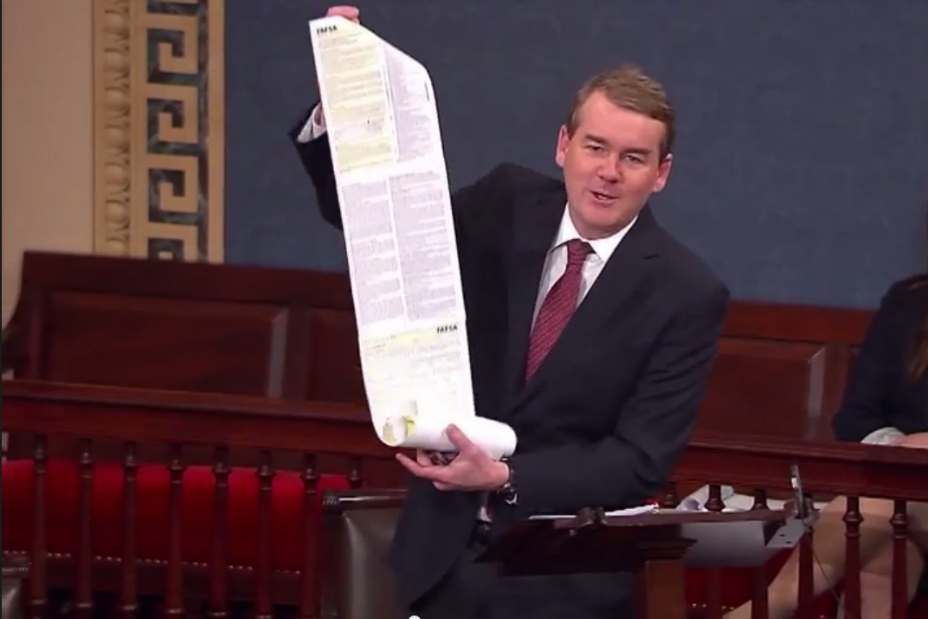April 5, 2016 |
Opinion: Easy ways to simplify financial aid

Tax day is just around the corner, and so is a significant change in the way students and families apply for federal financial aid. Currently, students must use family income from the most recent year - the "prior year" in financial aid parlance - when they fill out the Free Application for Federal Student Aid, known as FAFSA. Because taxes aren't due until mid-April each year, the timing is peculiar; students who search for colleges in the fall won't know how much financial aid they'll get until the spring.
Next year, a federal reform will allow students to use income from two years before, called "prior-prior-year" income, in applying for student aid. This may seem like a minor change, but it has substantial implications for college access.
Put yourself in students' shoes: Under the existing policy, you start searching for and applying to schools before the FAFSA is made available each year on January 1. To complete the form, the FAFSA requires your family's income for the previous year. (If you apply this spring 2016, you need your 2015 income.) That means waiting for the IRS to issue W-2s and other documents to file your taxes. By the time you finally file, May deadlines for college decisions are right around the bend, leaving little time to weigh options or shop around for schools. Plus you may not have time to apply to a number of other financial aid awards from institutions, foundations or first-come, first-served state grants that hinge on your federal aid eligibility from the FAFSA.
Starting this fall, however, the new system allows you to learn about financial aid eligibility months earlier, when you're still considering whether to enroll and where to apply. The FAFSA will be available on Oct. 1, 2016 for students enrolling in 2017-2018. You will already know your family income from the prior-prior year (2015), and that information can auto-populate into the FAFSA directly from the IRS. Put simply: You will know your aid eligibility before you apply to colleges, not after.
This is a help for all families, but especially for low-income students, for whom the process can be a major hurdle. Absent definitive knowledge of their aid eligibility, some may choose not to attend at all, others to attend cheaper colleges that are lower quality. And estimates suggest that roughly 2 million students annually are eligible for financial aid but enroll without applying for it, leaving money on the table.
But this is just one small step on the path to simplifying what has become a maddeningly complicated, bureaucratized process. The FAFSA remains excessively long (108 questions) and difficult to fill out - again, disproportionately affecting low-income students. One randomized study found that low-income individuals who received advice and a simplified version of the FAFSA were eight percentage points more likely to complete two years of college than those who did not receive that assistance.
While learning about financial aid in the fall of senior year is an improvement, by then a student's level of preparation for college is largely fixed. If they had learned about their aid eligibility earlier in high school, maybe they would have made different choices and invested more time in their studies or college search. Another field study showed that students given certain financial aid information were more likely to believe they were eligible for grants, aspire to a college degree and request additional information about enrolling in colleges and universities.
Where to start? Cutting the FAFSA down is one way to go. A bipartisan effort is underway, led by Sens. Lamar Alexander, R-Tenn., and Michael Bennet, D-Colo., to trim the fatty form to just a two-question postcard. Their proposal would only ask the most essential information for aid eligibility - prior-prior-year family income and family size.
Others say we can do away with the FAFSA altogether. University of Michigan professor Susan Dynarski has argued that the IRS already knows the necessary information (income and family size) through tax returns. Instead of having students and families file a FAFSA separately, the IRS could alert the Department of Education of individual tax filers' income. The tax return then becomes the aid application; families need only check a box when filling out their tax return to learn their eligibility for federal assistance. As part of his now-defunct presidential run, former Gov. Jeb Bush also proposed throwing out the FAFSA and notifying low-income families of aid eligibility in the ninth grade. (Full disclosure: my boss served as an informal education adviser for Bush during his presidential campaign.)
These proposals may not be as politically sexy as sweeping reforms like free college. But for what they lack in scope, they make up for in political feasibility. They represent incremental changes that would have a meaningful impact on students who are doing all the right things - studying hard and striving for college - and lack the money to pay for school. It's due time we reform the federal aid system - a system geared explicitly towards disadvantaged students, but that winds up being less accessible to them than their more advantaged peers. Removing unnecessary obstacles from students' paths to college is something both parties could and should agree on.
Source: U.S. News & World Report